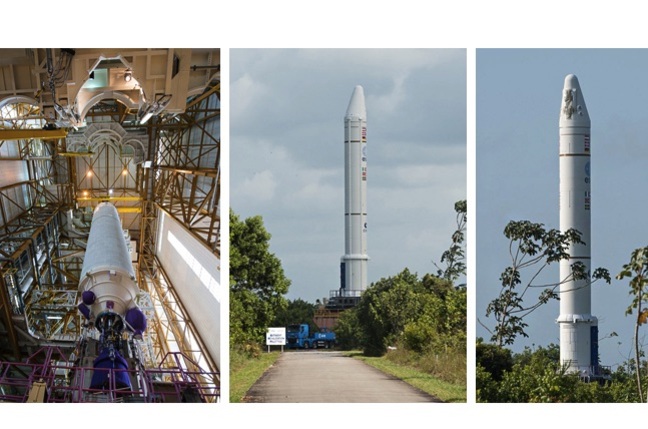| The first Sky Muster satellite will be launched from the Guiana Space Centre in South America on October 1. |
 |
| The Register: The Ariane 5 rocket. VA-226, that will carry the first NBN satellite into orbit |
The final countdown has started for the launch of the National Broadband Network (NBN) satellite 'Sky Muster'.
On October 1, the large communications satellite will be propelled into its 36,000 kilometre orbit.It's the first of two satellites that NBN will commission to deliver fast broadband to 200,000 rural and remote homes and businesses across Australia from the middle of next year.
NBN announces another 400 towns and suburbs will be added to network by late 2017 | optic-connections
The builders of the National Broadband Network (NBN) have announced a list of the next 400 cities, suburbs and towns planned for the network’s rollout.
NBN Co says almost two million homes should be connected by late 2017.
Construction under the plan is due to begin in mid-2016 with the network expected to be up and running 12 to 18 months later.
NBN Co chief executive Bill Morrow said the company was taking a new approach that used multiple technologies.
“Our objective is by 2020 to get every home, every business connected to the NBN,” he said.
“In order to do that in that short of a timeframe, we have to use a variety of technologies that takes advantage of the different infrastructure that’s across the country today.
“This is a bit of a learning process as we go. This is the first time this has been done in Australia.
“When we look at the next 19 months of the schedule we’ve given, we’ve factored in all of the trials, all of the process improvements and technology understanding that we have to be able to put this forecast out there.”
Sky Muster: final countdown to first nbn™ satellite launch | nbn - Australia's new broadband network
Scheduled to launch from Guiana Space Centre in South America on 1 October 2015, Sky Muster is currently on track to progressively deliver fast broadband to more than 200,000 homes and businesses in rural and remote Australia starting next year.
Weighing nearly 6,400 kilograms, it is one of the world’s largest communications satellites and is the first of two nbn plans to launch into space.
The 'Rolls-Royce' NBN satellite Malcolm Turnbull didn't want is ready for launch | afr.com
Glacial broadband speeds in remote
areas are a source of severe frustration. Under the current
oversubscribed interim satellite service, which uses spare capacity from
satellite operators such as Optus, download limits are severely limited.
A National Farmers' Federation submission to the current regional
telecommunications review chaired by former Telstra
executive Deena Shiff claimed many users were unable to perform basic
tasks online such as email photographs or use accounting software. Children
have been unable to complete School of the Air lessons.
"The state of broadband in
regional Australia at the moment is absolutely woeful," says NFF
general manager of rural affairs and agribusiness Charlie Thomas.
The new satellites boast a
total capacity of 135Gbps compared to only 4Gbps for the interim satellite
service, so Turnbull and his hand-chosen replacement, Mitch Fifield, can
safely claim the upgraded service will be a considerable improvement.
"[The new satellites are] helping to significantly bridge the digital
divide," Fifield says.
The aim of the
long-term satellite service is to deliver peak download speeds of 25
megabits per second, vaguely comparable with some urban areas. This
involves the two satellites each projecting 101 torch-like spot beams
across the continent (and offshore locations such as Christmas Island) as well
as the construction of no fewer than 10 ground stations
with twin 13.5 metre satellite dishes.
All this costs money. For a $45
billion to $56 billion project beset by cost blowouts since its inception, the
long-term satellite service and its associated infrastructure is
clearly the most expensive component. The cost of each satellite connection is
$7900, compared with an average cost of connecting fibre to existing homes
and businesses of around $4400. Put another way, the cost
of connecting about 3 per cent of the population to the NBN accounts
for almost 10 per cent of the total budget.
A cost-benefit analysis of the NBN commissioned by
the Coalition government and released in August last year found the most
cost-effective option would be an unsubsidised model in which the private
sector delivered high-speed broadband to 93 per cent of homes – leaving 7
per cent of premises in regional and rural areas without fast internet.
No comments:
Post a Comment